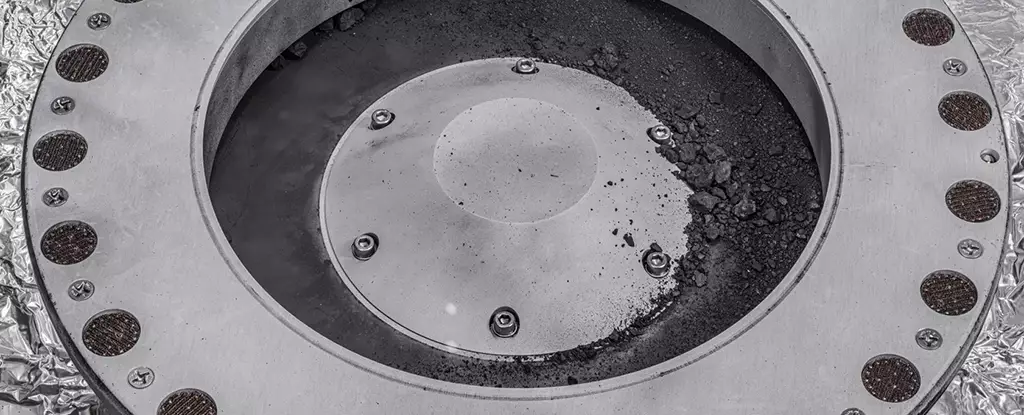In a groundbreaking mission, NASA scientists have begun their analysis of fragments brought back from the Bennu asteroid, and the initial findings are nothing short of extraordinary. Preliminary assessments indicate that the material contained within Bennu originated from an ancient ocean world, a conclusion drawn from the detection of a phosphate crust on the asteroid’s surface. This particular calcium and magnesium-rich phosphate mineral has never before been observed on meteorites that reach Earth. Interestingly, the mineral’s chemistry bears a striking resemblance to the vapor discovered shooting from beneath the icy crust of Saturn’s moon, Enceladus. This revelation further strengthens the theory that asteroids played a vital role in the emergence of life on Earth, as they delivered essential building blocks during the planet’s early history.
Scientists propose that the world Bennu was once a part of bore striking resemblance to Enceladus, albeit being approximately half its size. As the Solar System began to take shape, this hypothetical oceanic world faced destruction when it collided with another celestial object, thereby transforming into thousands of asteroids. The ongoing investigations into Bennu and its fragments elicit great excitement among scientists, as the opportunity to study samples from an asteroid is exceptionally rare. Remarkably, the OSIRIS-REx mission marks only the third occasion in history in which we have retrieved bits of an asteroid and successfully returned them to Earth. The entirety of the round trip spanned seven years and covered an immense distance of 6.21 billion kilometers (3.86 billion miles). In September 2023, the sample capsule safely arrived back, heralding a new era of extensive analysis and research.
Teams of researchers across the globe are engaged in an intensive examination of the asteroid fragments. At the University of Arizona, scientists are meticulously sifting through thousands of particles, with the largest measuring up to 3.5 centimeters (1.4 inches) in diameter. Various techniques are employed to analyze the asteroid samples, including X-ray diffraction, which enables scientists to derive valuable insights into the composition and nature of the materials. It is postulated that Bennu embodies remnants from the formation of the Solar System approximately 4.5 billion years ago. By unraveling the mysteries surrounding its origins, we stand to gain a deeper understanding of our own cosmic evolution. However, it is crucial to note that this research is still in its infancy, and numerous discoveries and revelations are expected to emerge in the years to come. Perhaps among these forthcoming breakthroughs, we may find confirmation of the type of planetesimal that gave birth to Bennu and its vibrant history.
Read More: The Fascinating Phenomenon of Superradiance in Quantum Optics
The initial findings and remarkable insights from the Bennu mission are set to be unveiled at the esteemed 55th Lunar and Planetary Science Conference held in Texas. This highly anticipated gathering of experts promises to shed new light on the asteroid’s composition and provide a platform for robust scientific discussions. The discoveries and revelations that will unfold during this conference are bound to ignite further curiosity and inspire future explorations into the unknown depths of our vast cosmos.
The analysis of fragments retrieved from the Bennu asteroid represents a significant milestone in space exploration. This extraordinary mission has opened new avenues of understanding about the composition of asteroids, their role in celestial evolution, and the potential for extraterrestrial life. With each new discovery, we inch closer to uncovering the enigmatic origins of our existence and paint a more vivid picture of the cosmic tapestry that surrounds us. As we venture into the future, armed with knowledge gleaned from these celestial fragments, the dawn of a new era in space exploration awaits us.


Leave a Reply